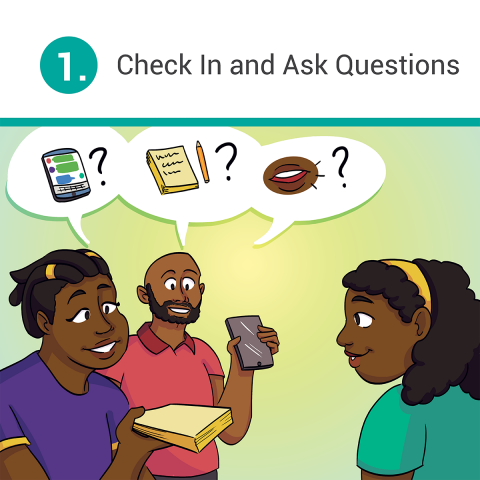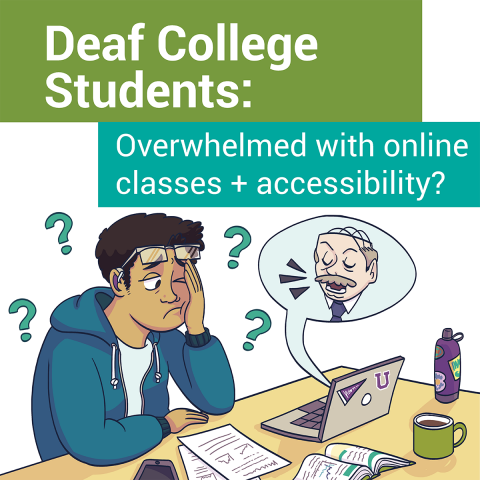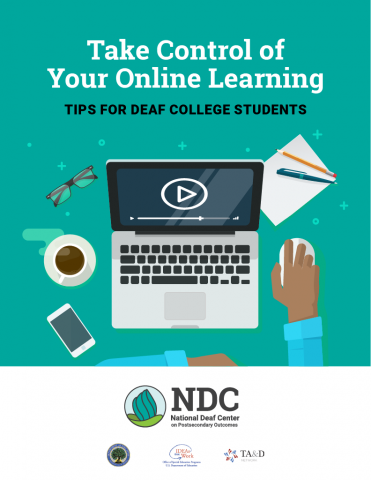Seven Tips to Improve Communication with Your Deaf Teenager During COVID-19

Here are seven quick tips for hearing parents, guardians, and hosts to improve communication with deaf children and guests, understand them better, and create a household that’s happier for everyone. [Disponible en español]
Decide, Act, Believe: How to Assess and Empower Self-Determination in Deaf Youth

Deaf teenagers already have a lot on their minds, even before the COVID-19 pandemic. And like all teenagers, they are experiencing lots of feelings of uncertainty, anticipation, and insecurity as they navigate the transition from child to adult. That’s where self-determination can help — during the pandemic and beyond. [Disponible en español]
How to Host Effective and Accessible Online Meetings with Deaf Participants

Whether you are meeting with colleagues who are working from home due to the COVID-19 pandemic, or connecting with clients in another state, a little advance planning can make sure your next online meeting is effective and accessible to deaf and hard of hearing people who will be attending.
Besides running a better meeting, effective communication between hearing and deaf people has other benefits for career success. Research shows it strengthens relationships, increases well-being, and fosters meaningful participation in the workplace.
Director’s Update, April 2020: We’re In This Together

As we all cope with our “new normal” and struggle to grasp the magnitude of what’s happening — and the uncertainty of what’s to come — I want to take a moment to pause and check in with you. This is what I know for sure:
Inside Higher Ed Q&A with Director Stephanie Cawthon: Challenges Students Face During COVID-19

Inside Higher Ed, the online source for higher education news and thought leadership for 3.2 million monthly readers, interviewed National Deaf Center Director Stephanie W. Cawthon, PhD, for a special Q&A about the challenges facing students with disabilities during the COVID-19 pandemic and how colleges can respond to those challenges.
Using Hearing Assistive Devices at Home: 5 Tips for Deaf College Students

With the sudden shift to online learning during the COVID-19 pandemic, deaf and hard of hearing college students who use hearing assistive technology (HAT) may need to shift technology gears — and perhaps even consider different communication methods — to access your online classes from home.
Live Discussion with Deaf Students: Help! All My Classes are Online!

We know that some students were unable to attend the first panel discussion on April 9, so we are hosting this panel again in hopes that you can join us. We will host the panel on Zoom on April 22 at 7 to 8:30 p.m. CDT.
Meeting the Needs of Deaf College Students: Live Panels, New Resources, and Help Desk

Deaf college students, just like their peers, have faced a challenging spring semester — from coping with a worldwide pandemic to the sudden move to online classes for many. These changes in learning environments mean so much more to deaf students than just Zoom meetings and searching for wifi. Accessibility has changed dramatically in just a short period of time.
Deafverse Can Help Deaf Teens Connect and Learn from Home

For deaf middle and high school students, there are very few accessible online games or resources. That’s why Deafverse, the first-ever American Sign Language (ASL) accessible online game for deaf teenagers, is the go-to game for at-home learning. [Disponible en español]
Join Us for a Live Student Panel
The National Deaf Center of Postsecondary Outcomes (NDC) has assembled a live panel of deaf undergraduate and graduate students to discuss their online learning experiences and tips for strengthening access and self-care during this stressful time. During the panel, students are invited to participate and share their own online learning experiences.
Checklist for Teaching Deaf Students Online
As schools across the country transition to online courses in response to COVID-19, educators are working to ensure students receive the same quality education they received in the classroom. For deaf students, this means all course content must be accessible and equitable.
This checklist for teaching deaf students online helps educators meet their needs and ensures compliance with the law. Stay tuned for a new National Deaf Center resource in the coming weeks, which will expand the checklist with more detailed tips and advice.
Take Control of Your Online Learning: Tips for Deaf College Students

COVID-19 has made colleges and universities around the United States switch to online learning for everyone — including deaf students like you.
Whether you have taken an online class before or are new to this, remember: accommodations don’t stop because you are now learning remotely. Here are some strategies for you to take control of your online learning and set yourself up for success. [Disponible en español]





